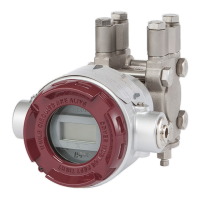2-12
Chapter 2 Installation of this Device
2-2-5 Precautions When Attaching FEP Protective Film
* The FEP protective film is optional. If this option is selected, a “Teflon Protective Film
Attachment Manual” will be included, so refer to that document as well.
• Be careful not to tighten the FEP protective film excessively, as the film may become
damaged.
• If the zero point shifts significantly when the pressure-receiving part is attached to the
process side flange, it is conceivable that there is too much grease or that the gasket is
misaligned, so check the attachment conditions for problems.
(1) 3B Flanges
When attaching the pressure-receiving part to the process side flange, follow the steps below
immediately beforehand.
(1) Hold the diaphragm surface of the pressure-receiving part of the transmitter such that it faces
upward.
(2) Apply about 15g of Daiflon grease (about one-third of a tube) to the diaphragm surface, and
spread it across the entire surface with your finger. The average thickness of the grease on the
diaphragm will be about 2mm.
Figure 2-10. Application of Grease
Also be careful of the following during attachment.
• When applying the grease, do not apply excessive force that might deform the
diaphragm.
• Make sure that no air (bubbles) are left in the grease.
(3) Fit the FEP protective film onto the diaphragm gasket surface.
Figure 2-11. Attachment of FEP Protective Film

